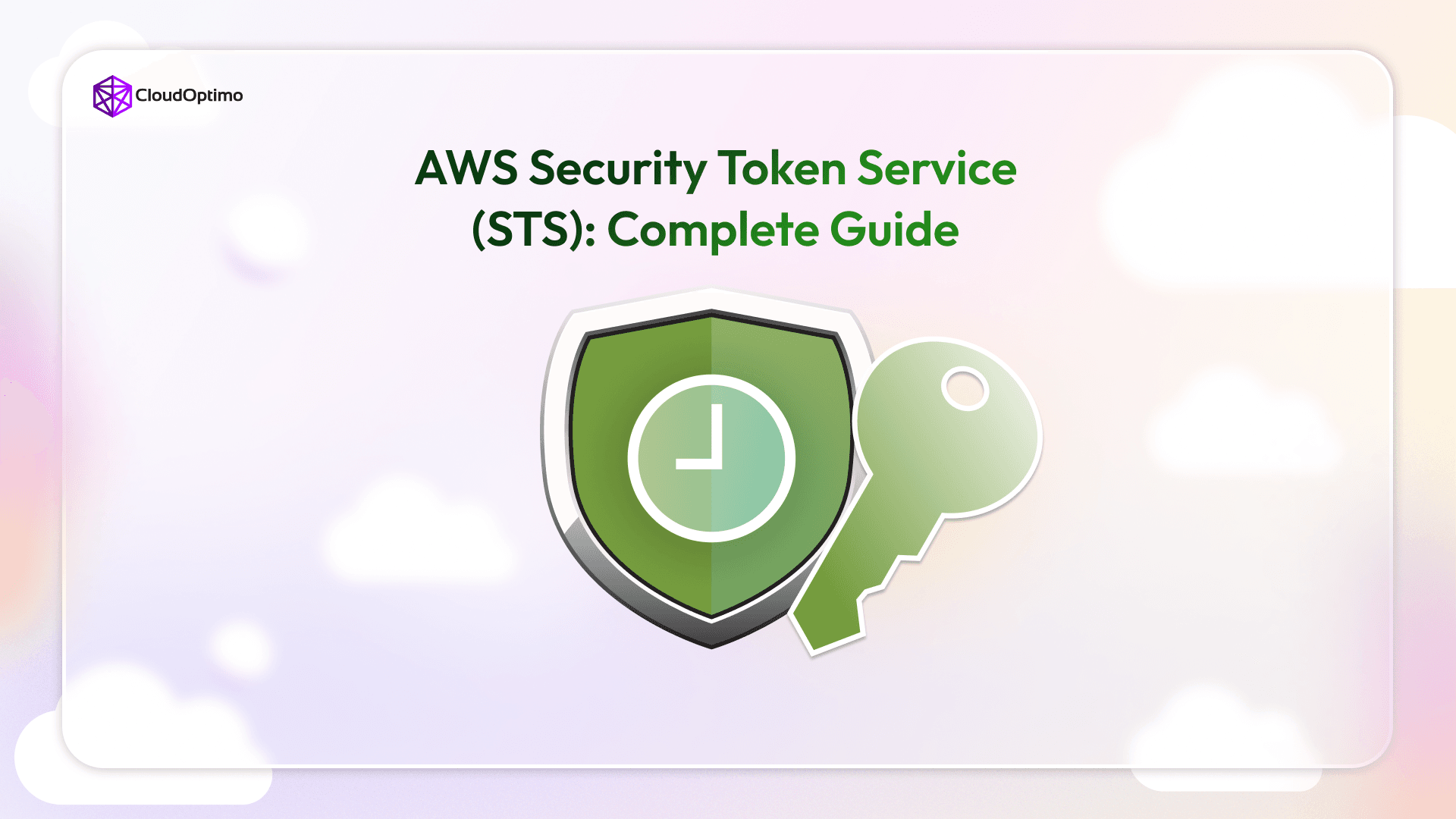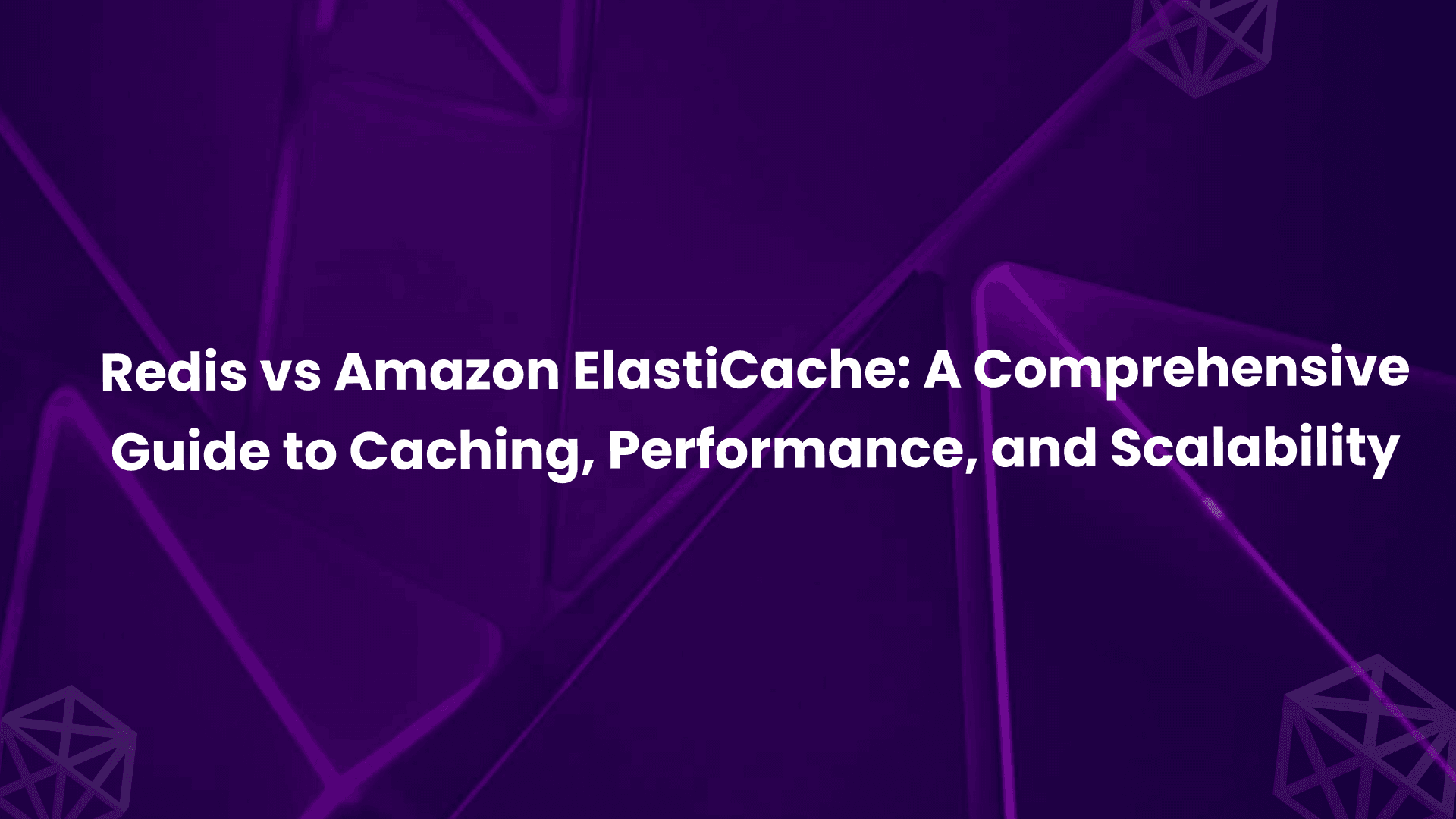AWS load balancers are critical in efficiently distributing traffic across applications to enhance availability, scalability, and performance. The key types of load balancers on AWS- Application Load Balancer (ALB), Network Load Balancer (NLB), and Gateway Load Balancer (GWLB)—are suited to different use cases based on application requirements and network needs.
This blog will explore AWS load balancers in-depth, covering their types, features, use cases, and best practices for configuration.
Understanding Load Balancing Fundamentals
AWS load balancers operate at various OSI layers:
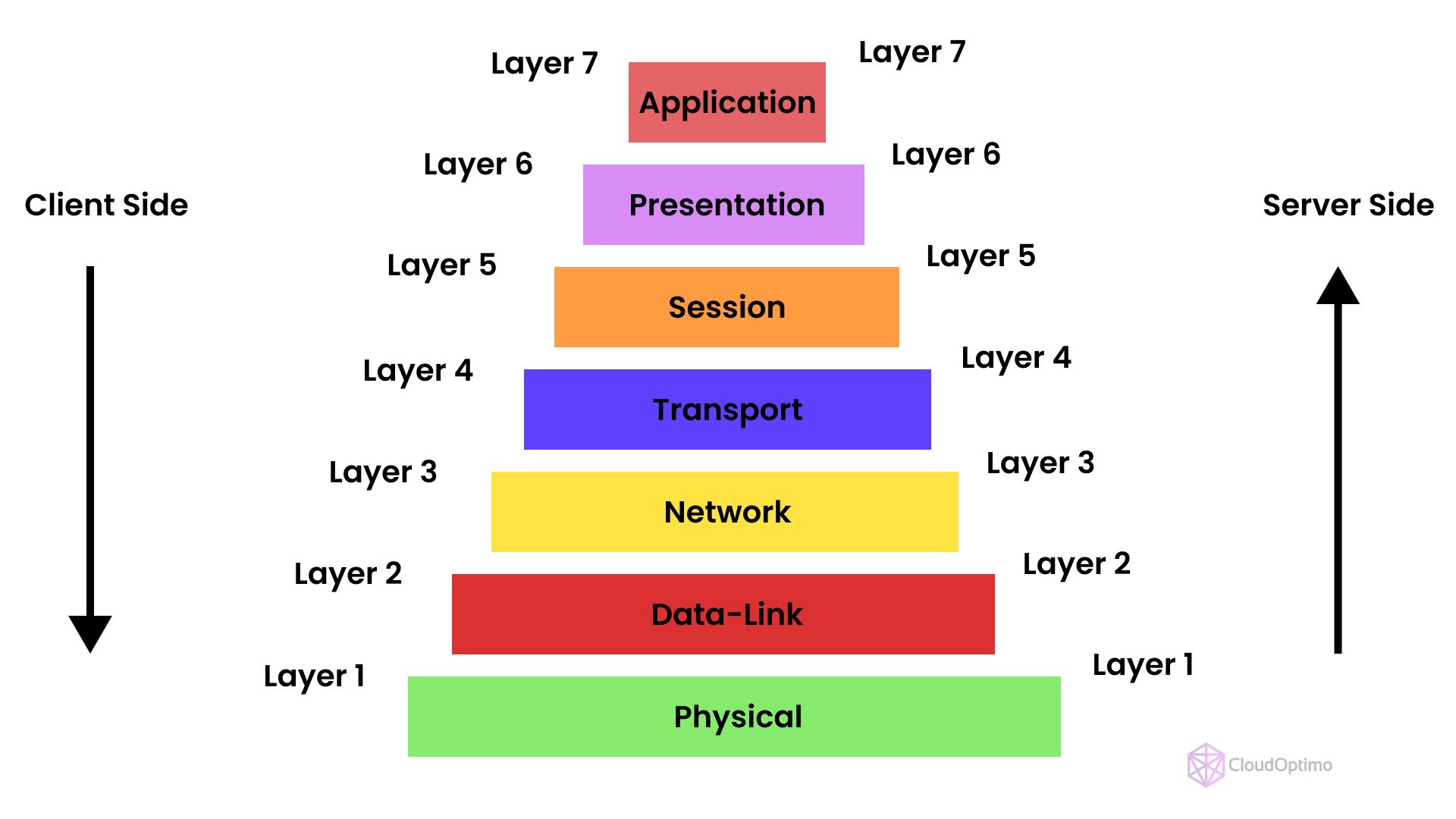
- Layer 7 (Application Layer): Handles application-level protocols (HTTP/HTTPS)
- Layer 4 (Transport Layer): Manages end-to-end communication (TCP/UDP)
- Layer 3 (Network Layer): Handles IP addressing and routing
Important Technical Terms:
- SSL/TLS: Security protocols that encrypt data transmission between client and server
- DDoS (Distributed Denial of Service): Attacks that flood servers with traffic to make them unavailable
- WebSocket: Protocol enabling two-way communication between client and server
Key Takeaway: Understanding the OSI model and basic networking concepts is crucial for choosing the right load balancer for your application.
Types of AWS Load Balancers
AWS provides four primary types of load balancers, each suited to different types of applications and workloads. Understanding the differences between these load balancers is crucial for selecting the right one based on an application’s specific requirements.
Application Load Balancer (ALB)
The AWS Application Load Balancer (ALB) operates at the application layer (Layer 7) of the OSI model, making it ideal for handling HTTP and HTTPS traffic. ALB is designed for advanced routing and enables complex application architectures that require path-based, host-based, and query-based routing decisions.
Features of ALB
- Layer 7 Routing: ALB can inspect application-level details within the request headers to make routing decisions, allowing fine-grained control over request handling.
- Path- and Host-Based Routing: ALB can direct traffic based on URL paths and hostnames, making it a perfect fit for microservices architectures.
- WebSocket Support: ALB supports WebSocket connections, which are essential for real-time applications that require long-lived connections.
- SSL Offloading: ALB offloads the SSL/TLS termination, reducing the computational load on backend servers and enhancing security.
- Sticky Sessions: ALB supports session stickiness, allowing users to maintain their session on a single target throughout their interaction.
When to Use ALB?
Application Load Balancers are best suited for microservices-based applications, API services, and any architecture that relies on Layer 7 routing features. They are also ideal for scenarios where there is a need for advanced HTTP/HTTPS management.
Network Load Balancer (NLB)
The Network Load Balancer (NLB) operates at the transport layer (Layer 4) and is designed for high-performance applications that require ultra-low latency. NLB is highly effective at handling millions of requests per second, making it a preferred choice for latency-sensitive workloads.
Features of NLB
- Layer 4 Load Balancing: NLB uses TCP and UDP protocols, providing fast and straightforward load balancing for applications requiring minimal routing complexity.
- Static IP Addresses: NLB assigns a single static IP per Availability Zone, simplifying the management of IP addresses.
- Elastic IP (EIP) Support: With NLB, users can assign Elastic IPs for easier IP management, making it simpler to integrate into existing network configurations.
- Connection-Based Targeting: NLB is connection-oriented, distributing traffic to targets based on established connections rather than individual requests.
- TLS Termination: NLB can terminate TLS at the load balancer level, offloading decryption processes from the backend servers.
When to Use NLB?
Network Load Balancers are ideal for latency-sensitive applications, real-time applications, and applications requiring raw TCP/UDP load balancing without complex routing logic. It’s commonly used for gaming, VoIP services, and IoT applications.
Gateway Load Balancer (GWLB)
Gateway Load Balancer is a specialized AWS load balancer designed to provide scaling and load balancing for third-party virtual network appliances. It operates at Layer 3 of the OSI model, facilitating inspection, monitoring, and security services across traffic flows.
Features of GWLB
- Transparent Packet Forwarding: GWLB can forward IP packets transparently, allowing security and network appliances to inspect and filter traffic without modifying the packet.
- Integration with Third-Party Appliances: GWLB enables seamless integration with virtual appliances from AWS Marketplace, including firewalls and network monitoring tools.
- High Scalability: GWLB automatically scales with demand, ensuring consistent performance as traffic increases.
- Elasticity and Redundancy: GWLB distributes traffic across multiple instances of network appliances, adding redundancy and increasing the system’s resilience.
When to Use GWLB?
Gateway Load Balancers are ideal for environments that need robust network security and traffic monitoring solutions. They support third-party appliances for tasks such as deep packet inspection, intrusion detection, and data loss prevention.
Classic Load Balancer (CLB)
The Classic Load Balancer (CLB) is one of the earliest AWS load balancers, designed to provide basic load balancing for both HTTP/HTTPS and TCP traffic. Operating at both Layer 4 and Layer 7 of the OSI model, it distributes traffic across multiple EC2 instances to ensure availability and fault tolerance. While newer options like Application and Network Load Balancers offer advanced features, CLB remains useful for legacy applications requiring straightforward load balancing.
Features of CLB
- Support for HTTP, HTTPS, and TCP Traffic
CLB can manage both application-level (Layer 7) and transport-level (Layer 4) traffic, making it versatile for various use cases. - Health Checks
Regularly performs health checks on target instances to route traffic only to healthy instances. - Sticky Sessions (Session Persistence)
Ensures session affinity by directing requests from the same client to the same backend instance for consistent user experiences. - SSL Termination
Offloads SSL/TLS processing to the load balancer, reducing the workload on backend instances. - Basic Routing Capabilities
Distributes traffic evenly across registered EC2 instances without advanced routing features like host-based or path-based routing. - Cross-Zone Load Balancing
Distributes traffic evenly across instances in multiple availability zones to ensure high availability.
When to Use CLB?
Classic Load Balancers are best suited for:
- Legacy Applications: Ideal for workloads that were built before advanced load balancing features were available.
- Simple Traffic Distribution: If your application doesn’t require advanced routing or traffic distribution capabilities.
- Budget-Conscious Deployments: A cost-effective option for straightforward use cases without advanced scaling or routing needs.
While the Classic Load Balancer is reliable for legacy systems, users with more complex requirements are encouraged to explore Application Load Balancer or Network Load Balancer for enhanced functionality and scalability.
- Support for HTTP, HTTPS, and TCP Traffic
Performance Comparison
| Feature | Application Load Balancer (ALB) | Network Load Balancer (NLB) | Gateway Load Balancer (GWLB) | Classic Load Balancer (CLB) |
| OSI Layer | Layer 7 | Layer 4 | Layer 3 | Layers 4 & 7 |
| Protocol | HTTP/HTTPS, WebSocket | TCP, TLS, UDP | IP Packets | HTTP/HTTPS, TCP |
| Use Case | Web applications | Real-time streaming | Firewall insertion | Legacy workloads |
| Latency | ~400 ms | ~100 μs | ~200 μs | ~500 ms |
| Connections/sec | 100,000 | 3,000,000 | 1,000,000 | 40,000 |
| Pricing Model | Request-based | Bandwidth-based | Based on data processed | Time-based hourly pricing |
| Price (per hour) | $0.02 | $0.02 | $0.02 | $0.03 |
| Key Features | Advanced routing, WAF | High throughput, low cost | Integration with firewalls | Basic load balancing |
Analysis of Each Value:
- Application Load Balancer (ALB)
- Best For: Web applications that require intelligent HTTP/HTTPS routing.
- Pros: Supports advanced routing and security with WAF.
- Cons: Higher latency (~400 ms) and fewer connections per second (100,000) compared to others.
- Network Load Balancer (NLB)
- Best For: Real-time streaming and high-throughput applications.
- Pros: Very low latency (~100 μs), supports up to 3 million connections per second, and is cost-effective for large data transfers.
- Cons: Limited to lower-level protocols (TCP, TLS, UDP).
- Gateway Load Balancer (GWLB)
- Best For: Integration with security appliances like firewalls.
- Pros: Great for processing IP packets and security integration.
- Cons: Moderate latency (~200 μs) and a lower connection rate (1 million/sec) compared to NLB.
Classic Load Balancer (CLB)
- Best For: Legacy workloads and simpler use cases.
- Pros: Supports both Layer 4 and Layer 7 traffic and is easy to set up.
- Cons: Higher latency (~500 ms), lower connection rate (40,000/sec), and less advanced features compared to newer options.
Each load balancer type serves a different purpose, with NLB being ideal for high-performance scenarios and ALB offering more complex routing for web apps. GWLB shines in security-heavy use cases, while CLB is best suited for legacy systems.
Key Benefits of AWS Load Balancers
AWS load balancers offer a host of benefits, making them indispensable in modern cloud architectures.
Scalability and Flexibility
AWS load balancers can scale automatically to handle traffic spikes, allowing applications to remain responsive under high load conditions. This elasticity ensures that resources are used efficiently, while applications remain accessible.
Enhanced Security
All AWS load balancers provide SSL/TLS encryption, while ALB offers additional options for enforcing strict security policies. AWS load balancers integrate well with AWS Identity and Access Management (IAM), AWS Shield, and AWS Web Application Firewall (WAF), enhancing protection against DDoS attacks and unauthorized access.
High Availability
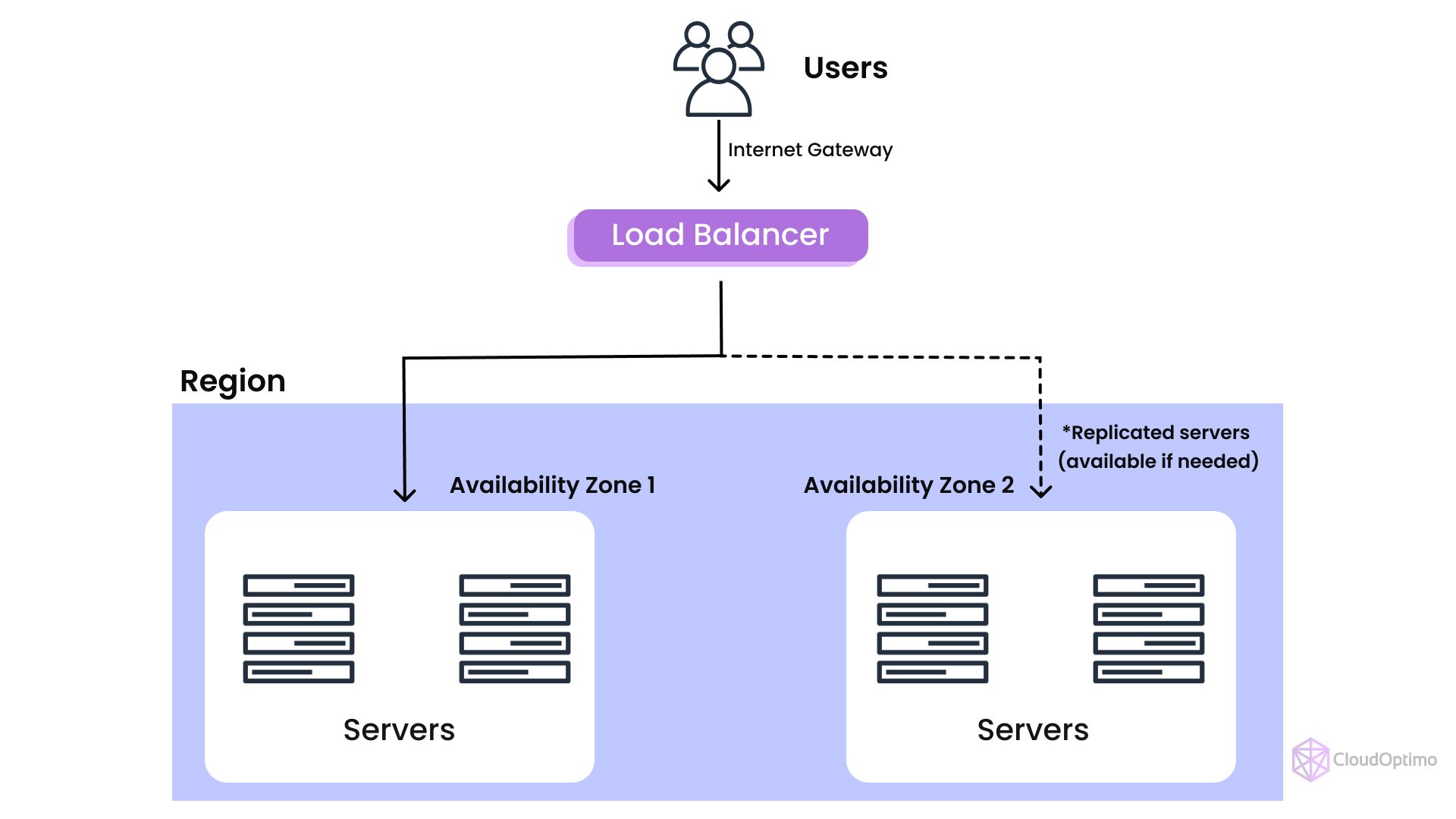
AWS load balancers are designed with built-in fault tolerance, ensuring that applications remain available even in the event of individual server or Availability Zone failures. They distribute traffic across healthy targets in multiple Availability Zones, significantly reducing the risk of downtime.
Reduced Latency
Network Load Balancer and Gateway Load Balancer offer extremely low latency, making them ideal for real-time applications. By balancing traffic at different layers, AWS load balancers help applications maintain low response times, improving user experiences.
Cost Management Strategies with AWS Load Balancers
Effective cost management is essential for any cloud-based infrastructure. AWS provides several ways to control and optimize costs associated with load balancers.
Optimizing Through Auto Scaling
By combining load balancers with Autoscaling, applications can handle fluctuating workloads without over-provisioning resources. Autoscaling helps to reduce costs by automatically adjusting the number of instances based on current demand.
- Dynamic Scaling: Adjust the number of targets based on metrics such as CPU utilization, memory usage, and request rates, ensuring optimal resource allocation.
- Scheduled Scaling: For predictable traffic patterns, scheduled scaling can help reduce costs by minimizing resource usage during off-peak times.
Using Spot Instances with Network Load Balancer
To reduce compute costs further, Network Load Balancer can be used with EC2 Spot Instances. Spot Instances offer significant discounts compared to On-Demand Instances, making them ideal for applications that are resilient to interruptions.
- Cost Savings: Spot Instances can reduce costs by up to 90% for interrupt-tolerant applications.
- Fallback Mechanism: Use On-Demand Instances as fallback targets for uninterrupted service if Spot Instances are reclaimed.
Selecting Optimal Load Balancer Type
Each AWS load balancer has different pricing structures based on usage and features. Selecting the right load balancer can save costs based on specific requirements.
- Application Load Balancer for HTTP Traffic: ALB is generally more cost-effective for web applications needing Layer 7 capabilities.
- Network Load Balancer for High-Throughput Applications: NLB is more economical for applications with high TCP/UDP throughput requirements due to its pay-per-connection pricing model.
Core Components of AWS Load Balancers
Understanding the core components of AWS load balancers can provide insights into how these services operate.
Target Groups
A target group is a logical group of resources that can include EC2 instances, IP addresses, or Lambda functions. AWS load balancers route incoming requests to targets in the target group based on their health and availability.
- Health Checks: AWS load balancers periodically check the health of targets in a group, ensuring that traffic is only directed to healthy instances.
- Target Types: Target groups support multiple types, such as instances, IP addresses, and Lambda functions, providing flexibility in defining routing destinations.
Listeners
A listener is a process that checks for connection requests. AWS load balancers use listeners to define the rules for routing requests to target groups based on protocol and port configuration.
- Listener Rules: Each listener can have rules that define how requests are routed. Rules may include host-based, path-based, or HTTP header-based conditions.
- Ports and Protocols: Listeners support multiple protocols, including HTTP, HTTPS, TCP, and UDP, offering diverse routing options.
Security Groups and Access Control
AWS load balancers can be associated with security groups that control incoming and outgoing traffic. Security groups ensure that only authorized traffic reaches the load balancer, enhancing security.
Advanced Security Measures
AWS load balancers include security features, but additional measures can further secure your applications.
Integration with AWS Web Application Firewall (WAF)
AWS WAF can protect applications from common web exploits like SQL injection and cross-site scripting (XSS). When used with ALB, it provides a robust security layer for web applications.
- Rule-Based Protection: WAF can block, allow, or count requests based on custom rules, enhancing security for sensitive applications.
- Pre-Configured Rules: AWS provides managed rule sets for common attack types, reducing the need for manual configuration.
Enabling DDoS Protection with AWS Shield
AWS Shield Advanced offers protection against DDoS attacks, which can target load balancers as a critical entry point to applications.
- Automatic DDoS Mitigation: AWS Shield Advanced provides automated response mechanisms that minimize downtime.
- Cost Protection: AWS Shield includes cost protection against scaling-related charges due to DDoS attacks, providing financial predictability.
Secure Access with SSL/TLS Certificates
Enabling SSL/TLS certificates for secure communication is essential for applications handling sensitive data.
- TLS Termination: By offloading SSL/TLS termination to the load balancer, backend servers are free to focus on application logic, reducing latency.
- AWS Certificate Manager (ACM): ACM simplifies certificate management, offering free SSL/TLS certificates that are auto-renewed, ensuring uninterrupted secure connections.
Monitoring and Observability for AWS Load Balancers
Proper monitoring enables you to track application performance, identify bottlenecks, and ensure load balancers are working optimally.
Amazon CloudWatch Integration
AWS load balancers integrate with Amazon CloudWatch to monitor metrics, set alerts, and visualize trends.
- Key Metrics: Monitor metrics like Request Count, Target Response Time, and Healthy Host Count to assess load balancer performance.
- Custom Dashboards: Create dashboards for real-time insights, such as tracking error rates and latency across different regions.
AWS CloudTrail for Auditing
AWS CloudTrail records API calls made to AWS load balancers, which is valuable for auditing and compliance.
- API Call Tracking: Log all calls made to load balancers for change management, helping teams detect unauthorized configuration changes.
- Compliance Auditing: CloudTrail logs can be used to meet regulatory compliance requirements by ensuring data traceability.
Log Analysis with AWS Lambda and Amazon S3
Store access logs in Amazon S3 and use AWS Lambda functions to analyze and generate insights from traffic patterns.
- Log Retention: Retain logs in S3 to analyze long-term patterns and optimize resource allocation.
- Real-Time Analysis: Lambda can process logs for immediate analysis, helping teams identify performance or security issues instantly.
Troubleshooting Common Issues with AWS Load Balancers
Despite robust architecture, load balancers can encounter issues that impact performance or availability. Here are some common issues and ways to troubleshoot them.
Troubleshooting High Latency
- Backend Server Health: High latency can often be traced back to overloaded or unhealthy targets. Use health checks and scale targets as needed.
- Cross-Zone Balancing: Enable cross-zone load balancing to distribute traffic more evenly across all targets.
Connection Timeouts
- Idle Timeout Settings: Increase idle timeout settings for applications with long-running requests, such as streaming services.
- Network Configuration: Verify network ACLs and security group settings, as misconfigurations can lead to dropped packets and connection issues.
High Error Rates
- Check Target Health: Ensure that targets meet health check requirements. Errors can be reduced by eliminating unhealthy targets from the pool.
- Monitor Security Groups: Misconfigured security groups can cause high error rates due to blocked traffic.
Common Use Cases
AWS load balancers support a wide range of use cases, from simple website hosting to complex microservices architectures.
Multi-Tier Architectures
In multi-tier architectures, an Application Load Balancer is often used to route traffic to a web application layer. Network Load Balancers may then direct traffic to backend services, ensuring high availability and performance at each layer.
Microservices-Based Architectures
For microservices applications, ALB’s path- and host-based routing features allow traffic to be directed to different services based on the request’s URI or hostname. This enables efficient and modular application design.
Real-Time Applications
Applications requiring real-time data processing, such as financial trading platforms or multiplayer games, benefit from NLB’s low latency and high throughput capabilities. These features help maintain responsiveness under high request volumes.
Security and Compliance
Organizations needing advanced security and compliance often deploy Gateway Load Balancers to handle data inspection and intrusion detection before traffic reaches the application. GWLB is essential for environments requiring stringent regulatory compliance.
Best Practices
Following best practices when configuring AWS load balancers can improve performance, security, and cost-effectiveness.
Choose the Right Load Balancer
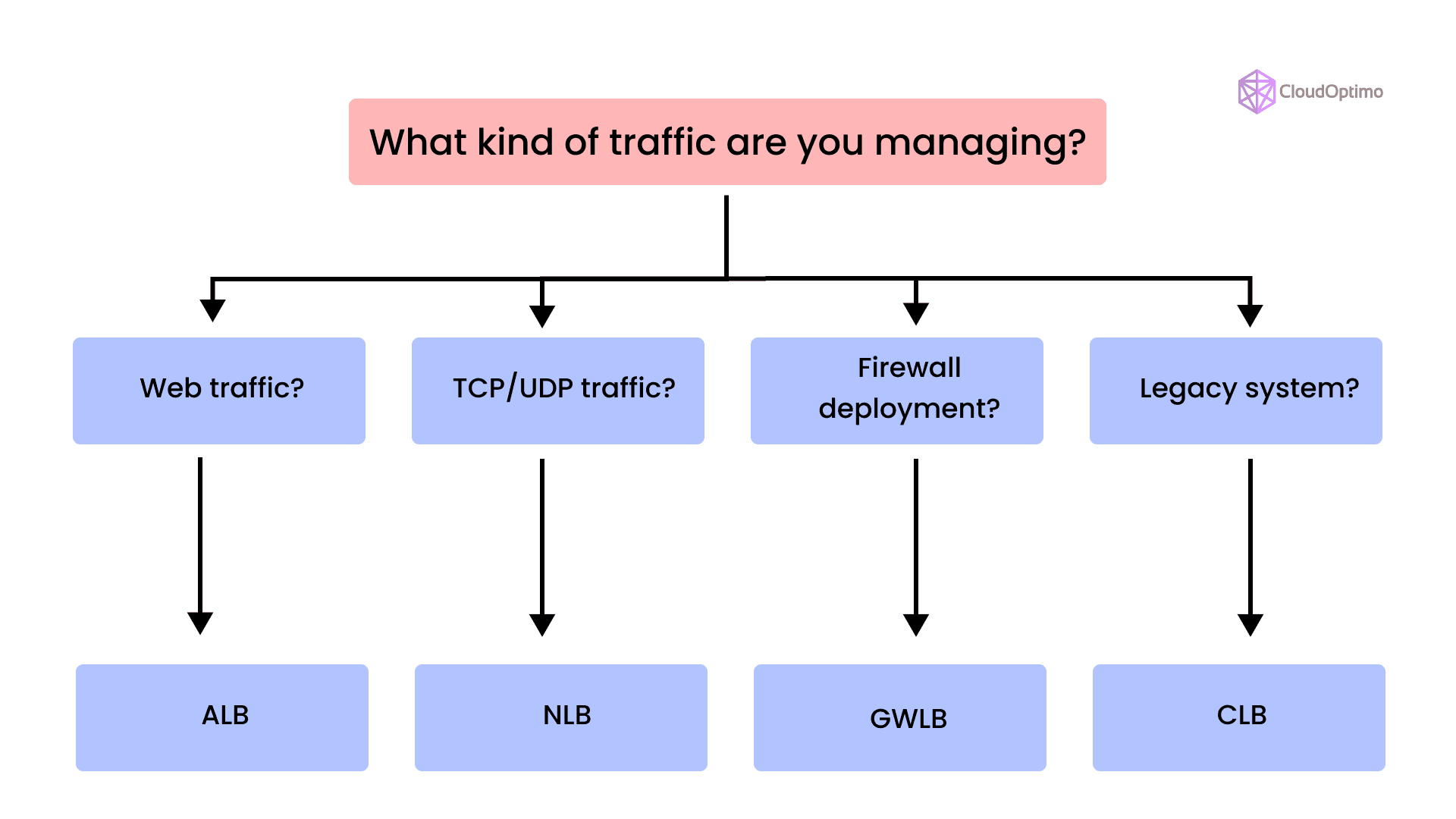
Selecting the appropriate load balancer depends on your application’s specific needs. ALB is suitable for HTTP/HTTPS applications, NLB for low-latency applications, and GWLB for network appliance integration. Misconfigurations or choosing the wrong type can lead to higher costs and suboptimal performance.
Optimize Health Checks
Ensure health checks are correctly configured to detect failures quickly and minimize downtime. Customizing health check settings, such as interval and timeout duration, allows you to tailor health checks based on the application’s resilience.
Enable Cross-Zone Load Balancing
Enabling cross-zone load balancing can improve resource utilization by distributing traffic across all available targets in multiple Availability Zones. This can help maintain consistency in traffic distribution, especially for applications with fluctuating demand.
Use SSL/TLS Offloading
SSL/TLS offloading can enhance application performance by reducing the load on backend instances. By enabling SSL offloading, AWS load balancers handle the encryption and decryption processes, freeing up resources for application servers.
Integrate with AWS WAF and AWS Shield
Enhancing security with AWS WAF and AWS Shield protects applications against threats such as SQL injection, cross-site scripting, and DDoS attacks. Integrating these services with your AWS load balancer allows for advanced threat mitigation.
Leverage Monitoring and Logging
AWS provides monitoring and logging services such as Amazon CloudWatch and AWS CloudTrail, which offer valuable insights into load balancer performance. Setting up alerts and monitoring metrics allows for proactive response to anomalies, reducing the likelihood of performance degradation.
Future of AWS Load Balancers
The demand for high-performance, resilient applications is driving innovation in AWS load balancing solutions. Here are some trends that could shape the future of AWS load balancing.
AI-Powered Traffic Management
As machine learning technology advances, AI-driven load balancing may become more prevalent. AI can predict traffic patterns and dynamically adjust routing to prevent overload and enhance user experience.
Deeper Integration with Edge Computing
With the rise of edge computing, load balancers may increasingly direct traffic to edge locations for latency-sensitive applications. AWS load balancers integrated with edge services can bring compute resources closer to end users, reducing response times.
Sustainability Initiatives
AWS is focusing on sustainable practices, which may lead to energy-efficient load balancing options. Future load balancers could incorporate energy-aware algorithms, optimizing traffic flow to minimize energy consumption.
AWS load balancers are powerful tools that support a variety of architectures, from simple web applications to complex, multi-tier environments. With Application Load Balancer, Network Load Balancer, and Gateway Load Balancer, AWS offers flexible options to address diverse application needs, ensuring high availability, security, and optimal performance. By understanding the unique capabilities and use cases of each AWS load balancer, as well as implementing best practices, businesses can leverage these tools to build robust, scalable applications on the AWS cloud.
AWS load balancers, when configured properly, can enhance the user experience, improve application reliability, and contribute significantly to a well-architected AWS environment.

